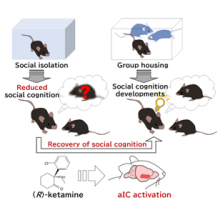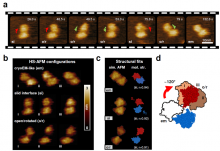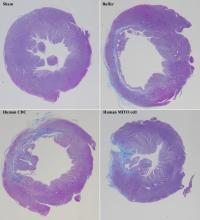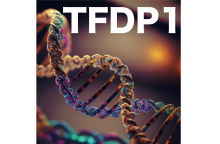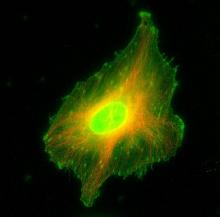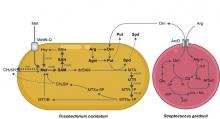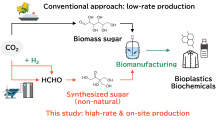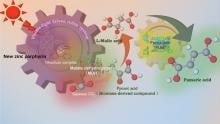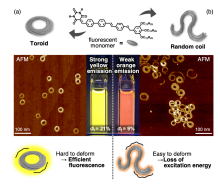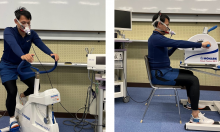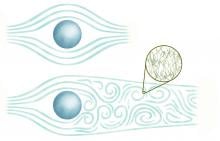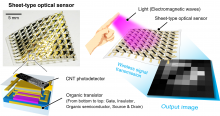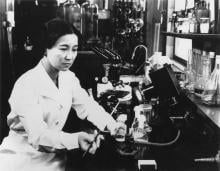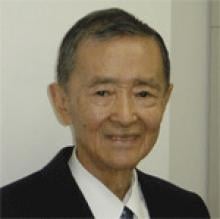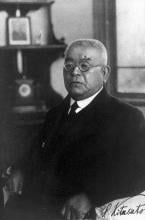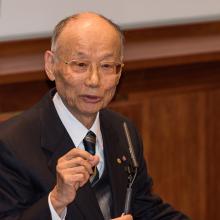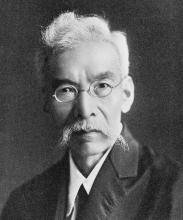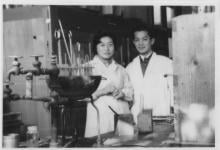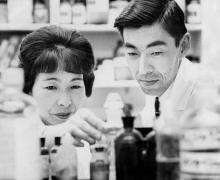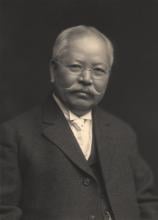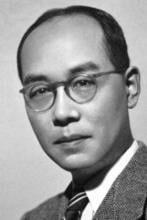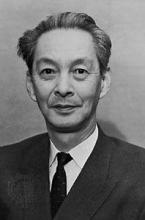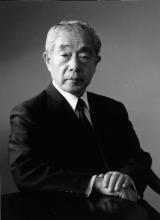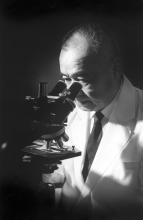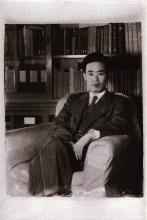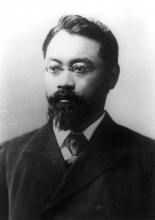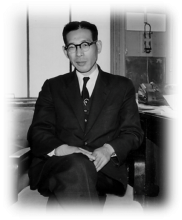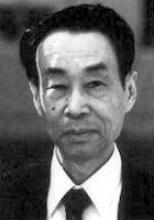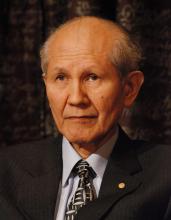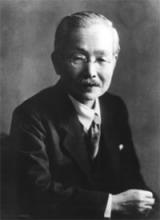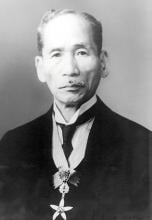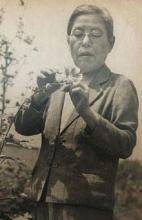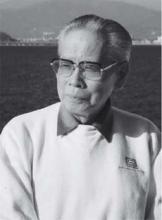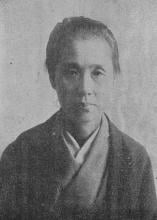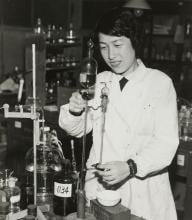Japan
News
23 Feb 2024
Researchers from Osaka University have found that, after chronic social isolation, one form of ketamine—(R)-ketamine—is effective for restoring neuronal activation in a brain region known as the anterior insular cortex. This restored activation leads to improvements in social impairments in a mouse model of depression. Together, these findings indicate that (R)-ketamine is a promising treatment for social symptoms of depression and may lead to better quality of life for millions of people worldwide.
22 Feb 2024
Innovative technology for the comprehensive analysis of membrane protein extracellular interactions.
22 Feb 2024
Researchers from Nano Life Science Institute (WPI-NanoLSI), Kanazawa University report in Nature Communications that TMEM16F, a transmembrane protein that facilitates the passive movement of phospholipids and ions across membranes, explores a larger conformational landscape than previously thought to perform its unique functions. The finding refines our molecular understanding of crucial physiological processes such as blood coagulation and COVID-19 pathogenesis, and highlights the importance of probing membrane proteins in native-like environments.
22 Feb 2024
The effects of a phenomenon called tree masting on ecosystems and food webs can be better understood thanks to new theoretical models validated by real world observations.
21 Feb 2024
Regenerative therapy to treat heart failure is more effective when the mitochondria of the regenerative cells are activated prior to treatment.
19 Feb 2024
In a study recently published in Nature Genetics, researchers from Nano Life Science Institute (WPI-NanoLSI), Kanazawa University explore chromatin accessibility, i.e., endogenous access pathways to the genomic DNA, and its use as a tool for gene editing.
16 Feb 2024
Researchers at Kanazawa University report in Journal of Cell Science on a novel role of the small Ca2+-binding protein S100A11 in focal adhesion disassembly.
16 Feb 2024
Researchers at Osaka Metropolitan University assess why post-operative symptoms such as pins and needles, sudden cold, burning, itching, and numbness in the limbs remain in patients suffering from cervical spondylotic myelopathy, even after surgery. The researchers also evaluated the patients’ satisfaction with postoperative treatment. They found that it was lower for those who still had paresthesia in their hands and feet, regardless of whether their motor symptoms had improved or not.
15 Feb 2024
Coordination polymer crystals show promise as a new generation of light sources for industry and medicine.
15 Feb 2024
A new method allows scientists to gather enough information about the properties of metals to enable the prediction of the properties of new materials.
15 Feb 2024
Researchers from Osaka University found that the oral bacterium Streptococcus gordonii activates another bacterial species, Fusobacterium nucleatum, to produce large quantities of methyl mercaptan, a compound responsible for bad breath. Disrupting this interaction could therefore help treat halitosis, and possibly also help prevent the development of more serious tooth and gum disease.
15 Feb 2024
Vaccines and therapies based on messenger RNA could be more readily delivered due to a non-toxic polymer that protects RNA and controls its release inside cells.
14 Feb 2024
Researchers from Osaka University and collaborating partners succeeded in biomanufacturing from chemically synthesized sugar for the first time in the world. With refinement of this technology, one can envision a future society in which the sugar required for biomanufacturing can be obtained "anytime, anywhere, and at high rate". In the future, biomanufacturing using chemically synthesized sugar is expected to be a game changer in the biotechnology field—including the production of biochemicals, biofuels, and food, where sugar is an essential raw material—ultimately leading to the creation of a new bio-industry.
14 Feb 2024
An innovative and more efficient way to produce fumaric acid that not only reduces carbon dioxide emissions, but also reuses waste resources to make biodegradable plastics
14 Feb 2024
Researchers from Osaka University have found that gargling with an antiseptic mouthwash can reduce so-called ‘bad’ bacteria in the mouths of patients with type 2 diabetes. Notably, this reduction in bacteria was accompanied by improved blood-sugar control in some patients. Given that the oral diseases caused by these bacteria have been linked to many other serious inflammation-associated diseases, such as cardiovascular disease and Alzheimer’s disease, this simple treatment may have widespread effects.
13 Feb 2024
The properties of supramolecular polymers are dictated by the self-assembled state of the molecules. However, not much is known about the impact of morphologies on the properties of nano- and mesoscopic-scale polymeric assemblies. Recently, a research team demonstrated how terminus-free toroids and random coils derived from the same luminescent molecule show different photophysical properties. The team also presented a novel method for purifying the toroidal structure.
13 Feb 2024
Researchers from the Institute of Industrial Science, The University of Tokyo have solved a foundational problem in transmitting quantum information, which could dramatically enhance the utility of integrated circuits and quantum computing.
13 Feb 2024
Researchers including Kavli IPMU have used equipment originally intended for astronomy observation to capture transformations in the nuclear structure of atomic nuclei, reports a study in Scientific Reports.
08 Feb 2024
A trained AI system learns to design cellular materials with specific target properties for a wide range of potential uses, including tissue engineering and energy storage.
08 Feb 2024
A new coating for tiny vaccine carriers allows vaccines to remain in the body for longer.
07 Feb 2024
Yokohama National University scientists are working towards creating a better tomorrow by addressing diverse challenges, from snow algae and tropical cyclones to AI cyberthreats, and much more.
01 Feb 2024
Theoretical predictions have been confirmed with the discovery of an outflow of molecular gas from a quasar when the Universe was less than a billion years old.
01 Feb 2024
Researchers from Osaka University and IMRA AMERICA demonstrated a 300 GHz-band wireless link that was able to transmit data over a single channel at a rate of 240 gigabits per second. The wireless communication system employs signal generators based on lasers that have ultra-low phase noise in the sub-terahertz band. This rate is the highest so far reported at these frequencies and is a substantial step forward in 300 GHz-band communications for 6G networks.
30 Jan 2024
A team of researchers from Osaka Metropolitan University assessed the feasibility of conducting cardiopulmonary exercise testing with the upper limbs as an alternative to the conventional method that uses the lower limbs. The researchers investigated the relationship between heart rate and oxygen uptake during exercise stress tests using a cycle ergometer and an arm crank ergometer, and estimated maximal oxygen uptake. The study participants were 17 male collegiate athletes from rowing and cycling clubs. The results showed that the estimated maximal oxygen uptake for both rowing and cycling groups was lower on the arm crank ergometer than on the cycle ergometer. Additionally, this study showed that exercise testing using an upper extremity ergometer underestimates cardiopulmonary function, regardless of upper limb training status.
29 Jan 2024
A new technology to increase visibility of cancer cells to the immune system using CRISPR has been developed, and could lead to a new way to treat cancer.
29 Jan 2024
A theoretical framework for measuring the Reynolds similitude in superfluids could help demonstrate the existence of quantum viscosity
23 Jan 2024
Corrugated wings exhibit larger lift than flat wings
23 Jan 2024
Researchers from SANKEN (The Institute of Scientific and Industrial Research), at Osaka University developed an optical sensor consisting of carbon nanotube photodetectors and organic transistors formed on an ultrathin, flexible polymer film. A wireless system reads the images from the sensor. Experiments showed the sensor has high sensitivity, a wide bandwidth, and robustness to extreme deformation such as bending and crumpling. This sensor has high potential for use in applications such as non-destructive imaging, non-sampling liquid quality evaluation, wearable devices, and soft robotics.
22 Jan 2024
A water-soluble, luminescent europium complex enables evaluation of malignancy grade in model glioma tumor cells.
Events
25 Oct 2011
This conference provides an international forum on VLSI circuit, device and process design. It will take place in the Xiamen, China from 25th to 28th October 2011.
03 Nov 2011
This congress showcases the latest progress in Nanomedicinal R&D. It will take place in Shenzhen, China from 3rd – 5th November.
15 Mar 2012
The International Conference on Devices, Circuits and Systems aims to provide a common forum for academic and experts on Electronics devices, circuits and system. It will be held in Karunya University, India on 15th – 16th March 2012. The deadline for abstract submission will be on 31st October, 2011.
20 Mar 2012
The 25th International Conference on Microelectronic Test Structures brings together designers and users of test structures to discuss recent developments and future directions. It will be held at the Catamaran Hotel in San Diego, California, USA, on 20th March, 2012. The deadline for abstracts submission is 16th September 2011
17 Oct 2011
The goal of this conference is to create a forum for researchers, academicians, engineers and industry players from various fields of photonics with different experiences and backgrounds. It will take place at Le Meridien Hotel, Malaysia, from 17th to 19th October 2011
08 Nov 2011
The 15th International Conference on Thin Films (ICTF-15)focus on thin films and coatings. It will be held at Kyoto TERRSA in Kyoto, Japan on 8th to 11th November 2011
07 Dec 2011
The biennial International Semiconductor Device Research Symposium focuses on exploratory research in electronic and photonic materials and devices. It will be held at the University of Maryland, USA on 7th December to the 10th December. The deadline to submit abstracts will be 29th August, 2011
14 Oct 2012
The International Workshop on Nitride Semiconductors (IWN2012) focuses on issues related to nitride materials and devices. It will be held in Sapporo, Japan on the 14th October 2012
28 Sep 2011
The 60th Symposium on Macromolecures is an annual event on the latest developments in polymer science. It also provides researcher and engineers in relevant fields a venue for discussions. It will takes place from 28th to 30th September.
21 Apr 2012
The Tenth Annual Workshop on Microelectronics and Electron Devices will provide a forum for all aspects of microelectronics. It will be held at the Boise State University, USA on 21st April 2012. The deadline for manuscript submission is 27th January, 2012.
29 Sep 2011
This conference aims to disseminate results on the NEDO project “Research and Development of Nanoparticle Characterization Methods - Evaluating Risks associated with Manufactured Nanomaterials”, and provide a forum for discussions on these results.
29 Nov 2011
The Nanomaterials Conference 2011 will be held in Xcaret, Mexico, on 29th November to 3rd December. The poster abstract deadline for this conference will be the 28th September
25 Oct 2011
The NT4D Conference is committed to providing a fertile and stimulating forum for discussion on recent nanotechnology innovations which maximize the impact to defense and dual-use technologies. It will take place at Hyatt Regency Bellevue, WA, USA, from 25th to 28th October.
24 May 2012
The 13th International Conference on Optimization of Electrical and Electronic Equipment (OPTIM) is an International conference on the latest technology of electricity and electronic system. It will be held in Brasov, Romania on 24th May 2012.
11 Sep 2011
The 6th International Conference on Fracture of Polymers, Composites and Adhesives invites papers on polymers, composites and adhesives.
28 Apr 2012
The Expo is the nation’s largest celebration of all things science & engineering since 2010. It will be held in Washington DC, USA on 28th April 2012
10 Jul 2012
The UGIM Symposium brings together educators and researchers on the field of micro/nanotechnology laboratory development and management. It will be held at the University of California, USA on 10th July 2012.
30 Nov 2011
The Asian BioCeramics Symposium is held annually to encourage interest in bioceramics and related fields. It will be held in Tsukuba, Japan on the 30th November to 2nd December.
05 Dec 2011
An exhibition for latest products, technology, services, peripheral devices and information that contribute to global environmental conservation
04 Oct 2011
CEATEC JAPAN is the Cutting-edge IT & Electronics Comprehensive Exhibition that attracts around 200,000 attendees.
17 Oct 2011
A unique environment for understanding, developing, and sharing reliability technology and test methodology for present and future semiconductor
06 Nov 2011
This symposium explores a variety of topics, include Microrobotics, Micromechatronics, Nanotechnology and more
28 Nov 2011
The PVSEC-21 will cover the entire field related with PVs from materials to systems as well as its deployment
03 Oct 2011
This conference aims to present new concepts, techniques and applications of atomically controlled processes at surfaces, interfaces and nanostructures.
07 Nov 2011
The ICAE 2011 is intended to provide an open forum to all participants with an opportunity to present the latest important findings in research activities in the field of electrical and electronic materials.

08 Sep 2011
The RIKEN Omics Science Center (OSC) in Yokohama, Japan, will hold a joint international training course entitled 'The Bioinformatics Roadshow' in collaboration with the European Bioinformatics Institute (EMBL-EBI) on 8–9 September 2011.
23 Sep 2012
The conference will be held on 23rd September 2012 to 28th September 2012 at Nara New Public Hall, Nara Japan
19 Feb 2012
The conference will be held on 19th February 2012 to 23rd February 2012 at San Francisco Marriott Marquis Hotel, San Francisco, CA, USA
28 Dec 2011
The conference will be held on 28th December to 30th December at Dubai, UAE
Researchers
Sorry, no researchers coming up for this topic.
Giants in history
Ruby Sakae Hirose (1904 – 1960) was a Japanese-American scientist whose research contributed significantly to our understanding of blood clotting, allergies and cancer.
Haisako Koyama (1916 – 1997) was a Japanese solar observer whose dedication to recording sunspots – cooler parts of the sun’s surface that appear dark – produced a sunspot record of historic importance.
Michiaki Takahashi (17 February 1928 – 16 December 2013) was a Japanese virologist who developed the first chickenpox vaccine.
Toshiko Yuasa (11 December 1909 – 1 February 1980) was the first Japanese female physicist whose research on radioactivity shed light on beta decay – the process in which an atom emits a beta particle (electron) and turns into a different element.
Baron Kitasato Shibasaburo (29 January 1856 – 13 June 1931) was a Japanese physician and bacteriologist whose work led to a new understanding of preventing and treating tetanus, diphtheria and anthrax.
By isolating soil microorganisms and studying the compounds they produce, Satoshi Omura (born 1935) discovered almost 500 organic compounds with unique properties that were produced by these microorganisms, including many new antibiotics.
In 1915, pathologist Katsusaburo Yamagiwa and his research assistant Koichi Ichikawa became the first to prove that chronic exposure to chemicals can cause cancer.
In 1915, Koichi Ichikawa along with pathologist Katsusaburo Yamagiwa became the first to prove that chronic exposure to chemicals can cause cancer.
Reiji Okazaki (8 October 1930 – 1 August 1975) and Tsuneko (7 June 1933) were a Japanese couple who discovered Okazaki fragments – short sequences of DNA that are synthesized during DNA replication and linked together to form a continuous strand.
Tsuneko (7 June 1933) and Reiji Okazaki (8 October 1930 – 1 August 1975) were a Japanese couple who discovered Okazaki fragments – short sequences of DNA that are synthesized during DNA replication and linked together to form a continuous strand.
Husband and wife team, Kimishige (3 December 1925 – 6 July 2018) and Teruko Ishizaka (28 September 1926 – 4 June 2019) discovered the antibody class Immunoglobulin E (IgE) that triggers allergic reactions. They also discovered that IgE antibodies attach to white blood cells, known as mast cells, releasing histamine, which causes allergic reactions.
Husband and wife team, Kimishige (3 December 1925 – 6 July 2018) and Teruko Ishizaka (28 September 1926 – 4 June 2019) discovered the antibody class Immunoglobulin E (IgE) that triggers allergic reactions. They also discovered that IgE antibodies attach to white blood cells, known as mast cells, releasing histamine, which causes allergic reactions.
Japanese chemist Takamine Jokichi (3 November 1854 – 22 July 1922) founded the Tokyo Artificial Fertilizer Company, where he isolated a starch-digesting enzyme (named takadiastase) from the fungus Aspergillus oryzae.
Hideki Yukawa (23 January 1907 – 8 September 1981) was awarded the Nobel Prize in Physics in 1949 for predicting the existence of the pi meson subatomic particle. Japan’s first Nobel laureate, Yakawa also expressed his support for nuclear disarmament by signing the Russell–Einstein Manifesto in 1955.
Shinichiro Tomonaga (31 March 1906 – 8 July 1979), together with Richard Feynman and Julian Schwinger, was awarded the Nobel Prize in Physics in 1965, for their contributions to advance the field of quantum electrodynamics. Tomonaga was also a strong proponent of peace, who actively campaigned against the proliferation of nuclear weapons and promoted the peaceful use of nuclear energy.
Japanese chemist Kenichi Fukui (4 October 1918 – 9 January 1998) was the first Asian scientist to be awarded the Nobel Prize in Chemistry. Together with Roald Hoffman, he received this honour in 1981 for his independent research into the mechanisms of chemical reactions.
Minoru Shirota (April 23, 1899 – March 10, 1982) was a Japanese microbiologist who invented the popular fermented drink Yakult.
Japanese physicist Ukichiro Nakaya (1900-1962) made the world’s first artificial snowflakes. He started his research on snow crystals in the early 1930s at Hokkaido University, where there is an unlimited supply of natural snow in winter. By taking over 3,000 photographs, he established a classification of natural snow crystals and described their relationship with weather conditions.
The techniques that make industrial pearl culturing possible were developed over a century ago at the Misaki Marine Biological Station in Japan. The station’s first director, Professor Kakichi Mitsukuri, emphasized to Kokichi Mikimoto in 1890 that stimulating pearl sac formation was important for pearl growth, and they went on to successfully develop methods for culturing pearls.
The field of solid-state ionics originated in Europe, but Takehiko Takahashi of Nagoya University in Japan was the first to coin the term ‘solid ionics’ in 1967. ‘Solid-state ionics’ first appeared in 1971 in another of his papers, and was likely a play on ‘solid-state electronics’, another rapidly growing field at the time.
Chika Kuroda (24 March 1884 – 8 November 1968) was a Japanese chemist whose research focussed on the structures of natural pigments.
Motoo Kimura (13 November 1924 – 13 November 1994) was a Japanese theoretical population geneticist who is best remembered for developing the neutral theory of molecular evolution.
Osamu Shimomura (27 August 1928 – 19 October 2018) was a Japanese organic chemist and marine biologist who dedicated his career to understanding how organisms emitted light.
Kikunae Ikeda (8 October 1864 – 3 May 1936) was a Japanese chemist who discovered the fifth basic taste, umami.
Umetaro Suzuki (7 April 1874 – 20 September 1943) was a Japanese scientist best remembered for his research on beriberi, a disease caused by vitamin B1 deficiency, characterized by limb stiffness, paralysis and pain.
Kono Yasui (16 February 1880 – 24 March 1971) was a Japanese botanist who researched the genetics of poppies, corn and spiderworts and surveyed the plants that had been affected by the nuclear fallout after the atomic bombings of Hiroshima and Nagasaki.
Hitoshi Kihara (1893 – 1986) was one of the most famous Japanese geneticists of the 20th century. One of his most significant contributions was identifying sex chromosomes (X and Y) in flowering plants.
Michiyo Tsujimura (17 September 1888 – 1 June 1969) was a Japanese agricultural scientist and biochemist recognized for her research of green tea components.
A Japanese surgeon, Tetsuzo Akutsu (20 August 1922 – 9 August 2007) built the first artificial heart capable of keeping an animal alive.
Ogino Ginko (3 March 1851 – 23 June 1913) was the first registered female doctor to practise modern medicine in Japan.
Japanese geochemist Katsuko Saruhashi developed the first method and tools for measuring carbon dioxide in seawater



